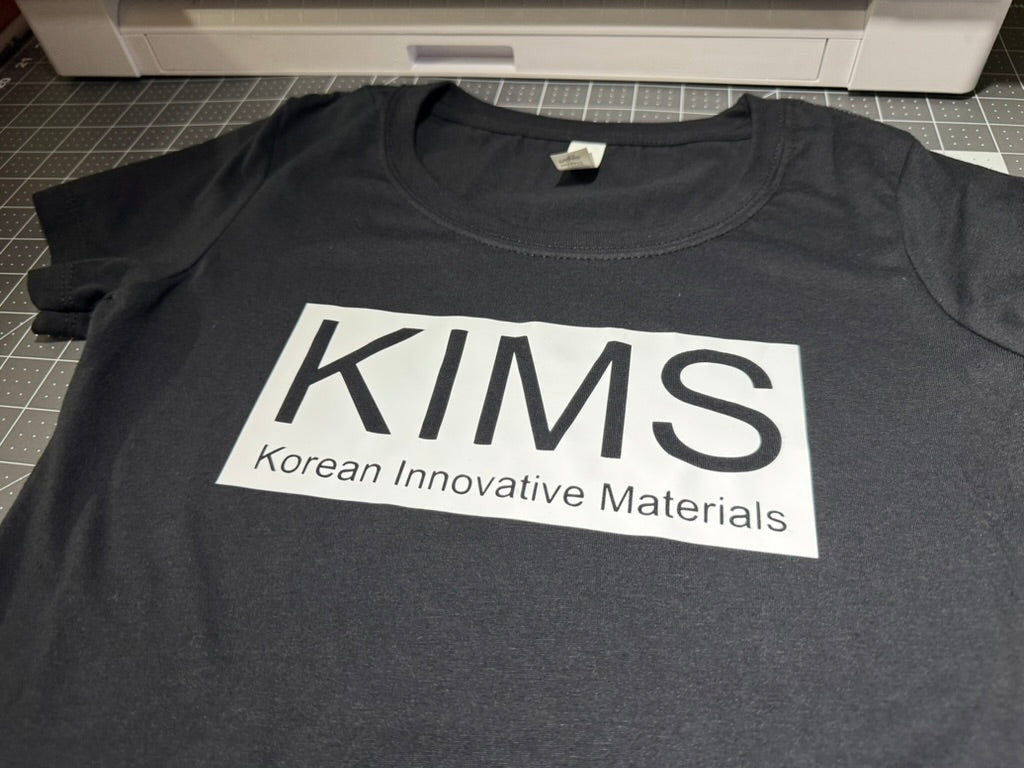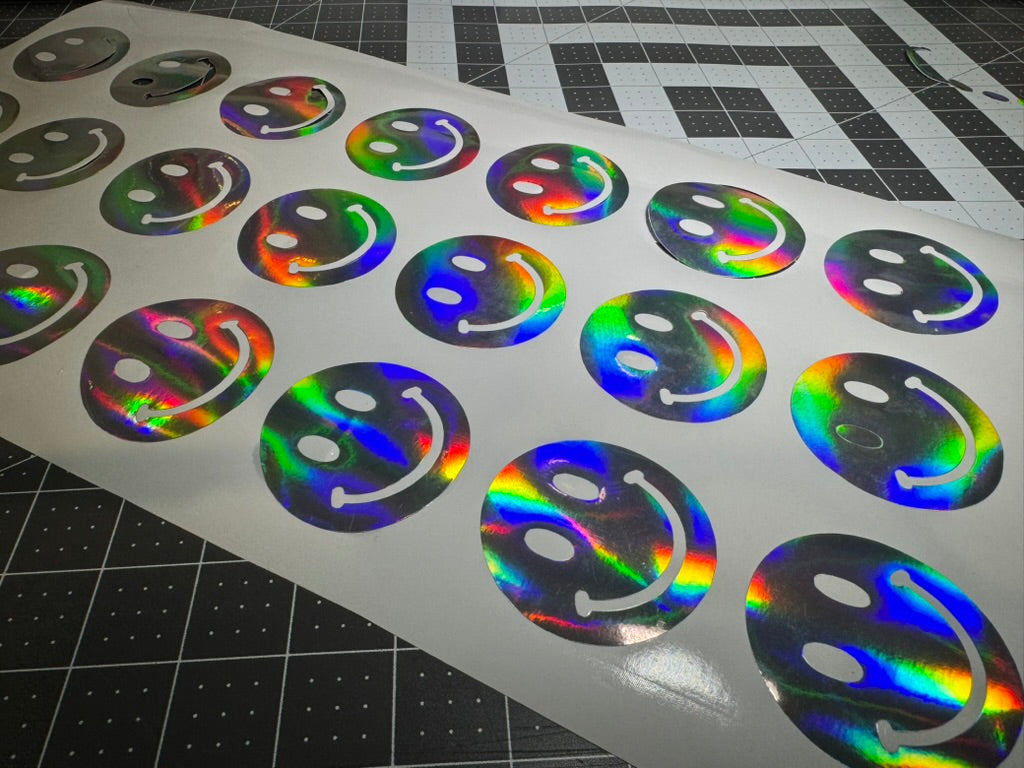Introduction
Heat transfer vinyl (HTV) is a versatile material used to decorate clothing, accessories, and other fabric items. It works by using heat and pressure to transfer a design from the vinyl to a surface, usually a t-shirt or similar material.
Not all HTV is the same. The material it's made from affects how it looks, how long it lasts, and how easy it is to work with. Different types of HTV perform differently depending on the fabric and the application method.
Understanding how HTV materials differ helps with choosing the best option for a specific use. This guide explores the key differences and best applications for various heat transfer vinyl materials.
Why Choosing the Right Heat Transfer Vinyl Matters
The material used in heat transfer vinyl directly affects how a finished product performs. Selecting the wrong type of HTV for cotton shirts or heat press machines can result in designs that peel, crack, or fade after washing.
Poor material selection may also lead to challenges during production. Some materials are harder to cut or weed, especially for detailed designs. Others may require higher heat or longer pressing times, which can damage certain fabrics.
There are two main categories of HTV:
-
Polyurethane (PU): A soft, lightweight material often used for apparel
-
Polyvinyl Chloride (PVC): A thicker, more rigid option, often used where durability is a priority
Material choice affects:
-
Durability: How well the vinyl withstands washing and wear
-
Appearance: The final look, including color vibrancy and finish
-
Application: How easily the vinyl cuts, weeds, and presses onto the substrate
Best Fabrics and Substrates for Heat Transfer Vinyl
Cotton and Cotton Polyester Blends
Cotton is the gold standard for heat transfer vinyl application. Its natural fibers create an ideal surface for HTV to bond with, making it perfect for heat transfer vinyl for t-shirts. Cotton's ability to withstand high temperatures without damage also makes it versatile for various vinyl types.
Cotton-polyester blends (50/50, 60/40, etc.) offer excellent results as well. These blends combine cotton's adhesion properties with polyester's durability, creating garments that hold designs well while resisting shrinkage.
For best results on cotton fabrics, use a temperature of about 305°F with medium pressure. Pre-pressing the fabric removes moisture and creates a smooth surface for application.
![Image: Cotton t-shirt with heat transfer vinyl design]
100 Percent Polyester and Performance Fabrics
Polyester presents unique challenges for heat transfer vinyl. This synthetic fabric is heat-sensitive and prone to dye migration, where the fabric's color bleeds into the vinyl design.
When working with polyester or performance fabrics:
-
Use lower temperatures (270-285°F) to prevent scorching
-
Select HTV specifically designed for polyester or labeled as "dye blocking"
-
Test a small area before full application to check for dye migration
Performance fabrics with moisture-wicking properties often contain high percentages of polyester. These materials work best with specialty heat transfer vinyl formulated for synthetic fibers.
Leather and Canvas
Textured materials like leather and canvas require different application techniques. These non-traditional substrates don't absorb heat the same way fabrics do.
For successful application on these materials:
-
Increase pressure: Firm pressure helps the vinyl conform to textured surfaces
-
Adjust time: Longer pressing times (15-20 seconds) allow better adhesion
-
Use a pressing pillow: This helps maintain even pressure on uneven surfaces
Certain vinyl types, particularly PU-based options and glitter HTV, adhere better to textured surfaces than standard varieties.
Wood and Other Hard Surfaces
Heat transfer vinyl can create durable designs on wood and other hard surfaces, expanding beyond fabric applications. These materials require specific techniques for successful application.
When applying HTV to wood:
-
Ensure the surface is smooth, clean, and flat
-
Use firm pressure and slightly higher temperatures (300-320°F)
-
Allow longer pressing times (15-20 seconds)
-
Use cool peel method for best results
This table summarizes the recommended settings for different materials:
|
Surface Type |
Recommended HTV |
Temperature |
Pressure |
Special Considerations |
|---|---|---|---|---|
|
Cotton |
PU, Standard HTV |
305°F |
Medium |
Pre-press fabric, cool peel |
|
Polyester |
Low-temp PU, Subliblock |
270-285°F |
Medium |
Use low-temp vinyl, test for bleed |
|
Leather |
Specialty PU/Glitter |
285-300°F |
Firm |
Use pressing pillow, longer press |
|
Wood |
Standard or Glitter HTV |
300-320°F |
Firm |
Smooth surface, longer press, cool peel |
Comparing PU, PVC, and Specialty Vinyl Types
PU for Softness and Stretch
Polyurethane (PU) vinyl is considered premium heat transfer vinyl for good reason. This thin, flexible material creates a soft "hand" or feel on garments, making it ideal for items worn against the skin.
Key advantages of PU vinyl include:
-
Superior stretch: Moves with the fabric without cracking
-
Thin profile: Creates a design that feels like part of the garment
-
Excellent wash durability: Maintains appearance through multiple wash cycles
PU vinyl works exceptionally well for:
-
Athletic wear and performance garments
-
Children's clothing where comfort is important
-
Fashion items that require a professional, retail-quality finish
PVC for Durability on Non-Stretch Items
PVC heat transfer vinyl is thicker and more rigid than PU. While less commonly used for everyday apparel, it offers advantages for specific applications.
PVC vinyl is ideal for:
-
Non-stretch items like bags, hats, and rigid fabrics
-
Projects where cost is a primary concern
-
Applications where a thicker, more prominent design is desired
This vinyl type typically costs less than PU but doesn't offer the same level of comfort or flexibility. For durable heat transfer vinyl applications that don't require stretch, PVC remains a practical option.
Glitter, Metallic, and 3D Puff Options
Specialty vinyl finishes add visual interest and texture to designs. These materials require specific application techniques but create unique effects that standard vinyl can't achieve.
Popular specialty vinyl options include:
-
Glitter HTV: Contains embedded glitter particles for sparkle
-
Metallic vinyl: Creates shiny, reflective surfaces
-
3D Puff: Expands when heated to create raised, dimensional designs
These specialty materials often require adjusted heat press settings. Glitter and metallic vinyl typically need higher temperatures (315-320°F), while 3D puff requires specific pressure and time settings to achieve the proper raised effect.
Reflective for High-Visibility Designs
Reflective heat transfer vinyl serves both decorative and safety purposes. This specialty material contains microscopic glass beads or reflective film that bounces light back to its source, creating visibility in low-light conditions.
Commercial grade heat transfer vinyl with reflective properties is commonly used for:
-
Safety apparel for workers
-
Athletic wear for runners and cyclists
-
Fashion items with high-visibility elements
Reflective vinyl requires special care to maintain its properties. Washing inside-out and air drying helps preserve the reflective quality through multiple wash cycles.
Tips for Successful Application
1. Use the Right Temperature and Pressure
Proper temperature and pressure settings are crucial for successful heat transfer vinyl application. Different vinyl types require specific settings for optimal results.
Common temperature ranges include:
-
PU vinyl: 305°F
-
PVC vinyl: 320°F
-
Glitter and specialty vinyl: 315-320°F
Test pressure by placing a sheet of paper between the heat press plates. When pulled, the paper should offer some resistance but not tear. This indicates medium pressure, which works for most applications.
Always preheat the fabric for 3-5 seconds before applying vinyl. This removes moisture and creates a smooth surface for better adhesion.
2. Prepare and Weed Correctly
Proper preparation ensures clean, professional results when working with heat transfer vinyl for t-shirts and other items.
Essential preparation steps include:
-
Mirror your design: Flip the image horizontally before cutting
-
Size appropriately: Scale designs to fit the intended application area
-
Cut test samples: Start with small test cuts to confirm settings
Weeding, the process of removing excess vinyl, requires patience and attention to detail. For intricate designs:
-
Use a well-lit workspace or light box to see cut lines clearly
-
Start from the outside and work inward for complex designs
-
Use fine-point tweezers for small details
3. Test Your Design Before Full Production
Testing saves time and materials by identifying potential issues before full production. A simple test process includes:
-
Cut a small portion of your design
-
Weed the test piece carefully
-
Press onto a scrap of the target fabric
-
Check adhesion and appearance
-
Adjust settings if needed
Look for issues like incomplete transfer, lifting edges, or poor color appearance. Making adjustments based on test results helps ensure consistent quality across production runs.
Common Mistakes and How to Avoid Them
1. Overheating or Underheating the Vinyl
Temperature problems are among the most common issues with heat transfer vinyl application. Signs of temperature problems include:
-
Overheating: Scorched fabric, melted or discolored vinyl, bubbling
-
Underheating: Poor adhesion, vinyl lifting from edges, incomplete transfer
To avoid temperature issues:
-
Use a digital heat press with accurate temperature control
-
Verify actual surface temperature with a heat gun or temperature strip
-
Follow manufacturer guidelines for specific vinyl types
Vinyl for heat press machines often includes detailed temperature recommendations. Following these guidelines helps ensure proper adhesion without damaging the vinyl or substrate.
2. Choosing the Wrong Fabric Blend
Not all fabrics work equally well with heat transfer vinyl. Problems often occur with:
-
High-stretch fabrics containing spandex or elastane
-
Nylon fabrics, which are heat-sensitive
-
Textured or uneven surfaces that prevent full contact
Before starting a project, check the fabric content label and research compatibility with your chosen vinyl. For challenging fabrics, consider specialty vinyl formulated for those specific materials.
Testing on scrap fabric allows you to identify potential issues before committing to a full design. This is particularly important when working with unfamiliar fabric types.
3. Ignoring Carrier Sheet Requirements
The carrier sheet (also called a carrier film or backing) holds the vinyl design in place during application. Different vinyl types use different carrier systems:
-
Cold peel: Remove the carrier after the vinyl has completely cooled
-
Hot peel: Remove the carrier while the vinyl is still warm
-
Warm peel: Remove the carrier when it's slightly cooled but still warm
Following the correct peel method prevents lifting, stretching, or damaging the applied design. The manufacturer's instructions typically specify the appropriate peel method for each vinyl type.
Elevate Your Results with Premium Materials
The best material for heat transfer vinyl depends on your specific project requirements. For most apparel applications, polyurethane (PU) vinyl offers the ideal balance of softness, durability, and ease of use. For rigid items or specialized applications, PVC or specialty vinyl types may be more appropriate.
Quality vinyl materials cut more cleanly, weed more easily, and adhere more reliably than budget options. This saves time during production and ensures better durability for the finished product.
For professional results, consider how the vinyl will perform throughout the product's lifecycle, not just during application. Vinyl for custom apparel should maintain its appearance and adhesion through multiple wash cycles, while vinyl for outdoor applications should resist UV damage and weathering.
FAQs About Heat Transfer Vinyl Materials
What heat transfer vinyl works best for designs with very fine details?
Thin polyurethane (PU) vinyl with a thickness of 50-75 microns provides the best results for intricate designs, as it cuts cleanly and weeds easily even with small details.
How do different vinyl materials perform after multiple washes?
PU vinyl typically maintains its appearance and adhesion through 50+ wash cycles, while specialty finishes like glitter and metallic may show some wear after 25-30 washes.
Can I use the same vinyl material for both cotton and polyester fabrics?
Multi-fabric compatible vinyl formulations work on both cotton and polyester, but you may need to adjust temperature settings (lower for polyester, standard for cotton).
What heat transfer vinyl is best for stretchy athletic wear?
Thin polyurethane (PU) heat transfer vinyl with high elasticity is ideal for athletic wear, as it stretches with the fabric without cracking or peeling.
How do I choose between PU and PVC vinyl for my project?
Choose PU vinyl for garments worn against the skin or items requiring stretch and comfort; select PVC vinyl for rigid items, outdoor applications, or projects where cost is the primary concern.







